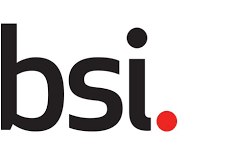Proposal: ISO/ASTM PWI 52954-1 – Additive manufacturing — Qualification principles — Part 1: Common failure modes used for risk mapping
Please visit: ISO/ASTM PWI 52954-1
Comment period end date:04/02/2024
Scope
This document identifies common failure modes, which can occur within operations across additive manufacturing (AM) process categories defined in ISO/ASTM 52900. It lists state-of-the-art failure modes, which can lead to risks within AM parts and equipment, as well as providing informative examples of corresponding failure effects and mitigation actions.
This document can be used to aid manufacturers in their risk management. While doing so it supports the implementation of AM as a production method within critical applications and regulated industries. This document helps to address the requirements for risk management set by regulated industries for part and production method compliance.
Technology specific failure modes will be addressed in separate standards, including but not limited to PBF-LB/M, PBF-LB/P, MEX, MJT, BJT, and DED.
This document aims to close the existing gap between general risk management standards, such as ISO 31000 or ISO 14971 (medical), and the know-how gap of existing failure modes of the AM process category and their integrated workflow.
The standard maps risks according to AM processes defined within ISO/ASTM 52920.
This document does not cover environment, health and safety risks and will not measure, assess, or evaluate the risk impact on the AM part to be produced. It does not list the part specific input and output parameters, during the respective process steps. This task is dedicated to the risk management evaluation teams, which usually comprise quality managers and product domain specific experts. The document enables all part owners and manufacturers to use it for the risk mapping activities, to support subsequent risk assessments, continuous improvement, validation planning, estimation of manufacturing efforts, and conformity audits.
For risk examples that are relevant only to specific AM machinery brands, manufacturers might consider use of the informative annex.
Purpose
Additive manufacturing increasingly represents an attractive alternative to conventional manufacturing methods for companies. The trend towards complex parts, decentralised manufacturing and customised products allows economically viable application for a wider area. This applies to an increasing number of serial applications, which pose new requirements and risks to the processes’ performance. High quality, safety and risk mitigation requirements need to be fulfilled for components used industrially, especially in regulated industries (e.g., automotive, railway, aerospace, energy, medical). The present lack of standards means that processes and corresponding risk management for the additive manufacturing of parts need to be defined from scratch for each individual case, which entails a high degree of expense, and which permits little transparency and hence little trust amongst stakeholders in the process. Where industrial parts are produced using additive manufacturing techniques, the manufacturer needs to verify how the applicable requirements are satisfied and that the corresponding risks are eliminated or reduced as low as reasonably practicable. To this end, the process chain and environment are designed and evaluated in a way that the process quality and resultant part quality remain consistent and reproducible, and simultaneously suppress new risks and hazards emerging in or after the process. The document outlines the relevant areas to establish an additive manufacturing process conforms to risk management principles. This document aims to outline the risk relevant areas as an integral whole (not product specific), which are necessary as a basis for designing processes for high-quality and risk-minimized additively manufactured parts. In regulated industries, such as the automotive industry, mechanical engineering, the rail sector, aerospace, process and industrial systems, energy sector or medical technology, consideration of the criteria defined within the framework of this document will establish a basis for fulfilling the requirements for specific products risk management.
Proposal: ISO/ASTM PWI 52946 – Additive manufacturing of metals — Finished part properties — Stainless Steel Alloys made by powder bed fusion
Please visit: ISO/ASTM PWI 52946
Comment period end date:02/02/2024
Scope
This document covers additively manufactured stainless steel components using full-melt powder bed fusion such as electron beam melting and laser melting. The components produced by these processes are used typically in applications that require mechanical properties similar to machined forgings and wrought products. Components manufactured to this specification are often, but not necessarily, post processed via machining, grinding, electrical discharge machining (EDM), polishing, and so forth to achieve desired surface finish and critical dimensions.
This document is intended for the use of mechanical engineers to size equipment, purchasers or producers, of additively manufactured components for defining the requirements and ensuring component properties.
This document does not purport to address all of the safety concerns, if any, associated with its use. It is the responsibility of the user of this document to establish appropriate safety, health, and environmental practices and determine the applicability of regulatory limitations prior to use.
Purpose
An international material standard is one of the biggest steps to industrialise a production technology and introduce it completely to all industries. For conventional technologies like forging and casting there are a lot of different standards available in different regions or countries like EN-standards for Europe or JIS standards for Japan. With this standard we will get the first international material standard, valid for all regions around the world. It is needed to define the mechanical and physical values for stainless steel produced by powder bed fusion technologies and to widely enhance the usability in the industry
If you have any comment or need more information on either of the above, please contact Sami Ortiz at sami.ortiz@mta.org.uk

